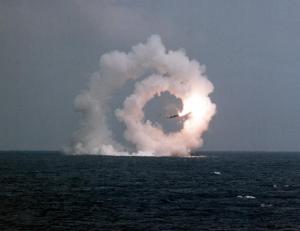By Daryl G. Kimball
Sometimes former national security heavyweights still have some insights on nuclear weapons policy--sometimes they don't. In an oped in The Washington Post today, Former Secretary of State Henry Kissinger and General Brent Scowcroft make the incorrect presumption that the Barack Obama administration's ongoing review of nuclear force requirements and planning for the next round of nuclear reductions is based on "an abstract preconceived determination" for nuclear weapons policy. The two former national security officials cite a February Associated Press report on the Nuclear Posture Review (NPR) Implementation Study, which cited an unnamed source who erroneously claimed that President Obama had ordered the Pentagon to develop plans to reduce the deployed strategic arsenal to 300 warheads. That report has been dismissed by senior administration officials, who called it "wildly overwritten." Kissinger and Scowcroft then proceed in their oped to state some standard principles for consideration as the United States considers further nuclear reductions, all of which are specifically addressed in the NPR. They should both know better or at least hire better research assistants. Just last week, Assistant Secretary of Defense for Global Strategic Affairs Madelyn Creedon testified before the House Armed Services Committee and said: ".. the presidentially directed NPR follow-on analysis ... is underway. This analysis will culminate in updated nuclear guidance, which will in turn inform the Administration's policy decisions regarding potential future nuclear weapons reductions while strengthening deterrence of regional adversaries, enhancing strategic stability vis-à-vis Russia and China, and continuing assurance of our allies and partners. The analysis will not revisit the principles or conclusions of the NPR; rather, it is a key component of the NPR's implementation. In fact, in performing this analysis, we focused on achieving the five strategic objectives that the Nuclear Posture Review established: · Preventing nuclear proliferation and nuclear terrorism; · Reducing the role of U.S. nuclear weapons in U.S. national strategy; · Maintaining strategic deterrence and stability at reduced nuclear force levels; · Strengthening deterrence and assuring U.S. allies and partners; and · Sustaining a safe, secure, and effective nuclear arsenal. Last year, Principal Deputy Under Secretary of Defense for Policy Jim Miller explained to the House Armed Services Committee that DoD has been assessing deterrence requirements against these metrics." On March 25, President Obama himself spoke on the subject, noting: "My Administration's nuclear posture recognizes that the massive nuclear arsenal we inherited from the Cold War is poorly suited for today's threats, including nuclear terrorism. Last summer, I therefore directed my national security team to conduct a comprehensive study of our nuclear forces. That study is still underway. But even as we have more work to do, we can already say with confidence that we have more nuclear weapons than we need. Even after New START, the United States will still have more than 1,500 deployed nuclear weapons, and some 5,000 warheads. I firmly believe that we can ensure the security of the United States and our allies, maintain a strong deterrent against any threat, and still pursue further reductions in our nuclear arsenal." Clearly, The Washington Post needs to fact check their opeds a bit better and Kissinger and Scowcroft need to get a briefing from officials in the Obama administration on the topic. All that said, everyone should keep in mind that significant changes in outdated U.S. nuclear war-fighting strategy and further reciprocal reductions in U.S. and Russian arsenals are possible and prudent. A commonsense, 21st century evaluation of nuclear deterrence should lead to the conclusion that no more than a few hundred strategic warheads—deployed on highly survivable delivery systems—can provide more than enough firepower to deter nuclear attack by any current or future adversary. Other than Russia, only one other U.S. adversary has nuclear weapons on long-range ballistic missiles (China with 50). As the Pentagon's new 2012 defense strategy says: "It is possible that our deterrence goals can be achieved with a smaller nuclear force."

